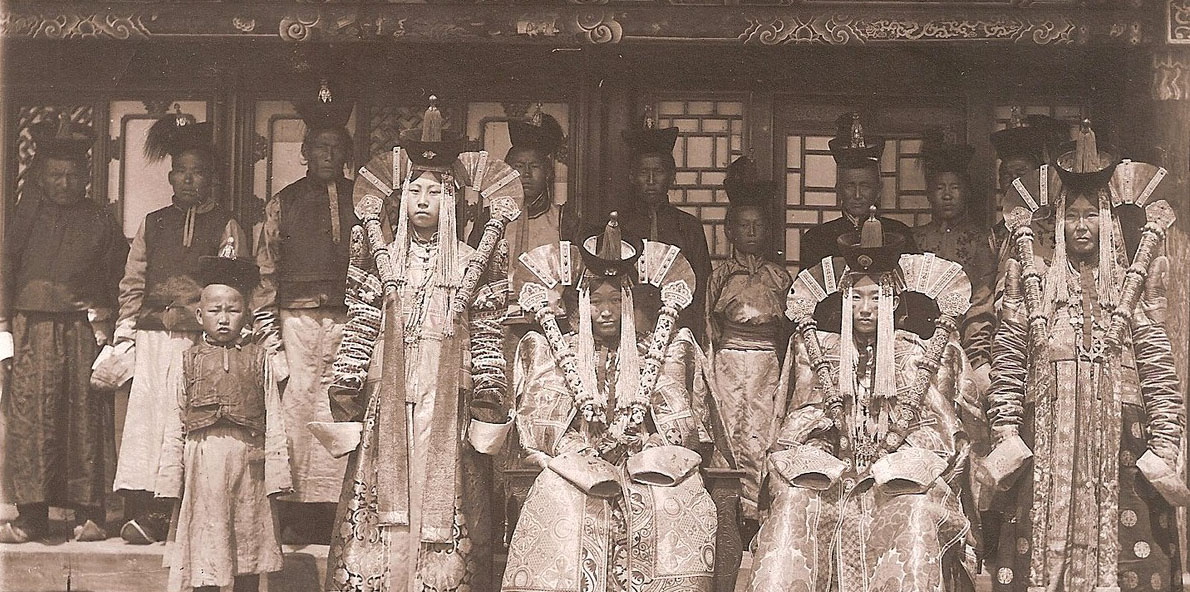
Nefarious noble scheming has long been a staple of fantasy fiction, and it quite often makes the leap to space operas and the like, too. (Herbert’s Dune, for example.) Figuring out what the local nobility is up to in your campaign, therefore, can be an endless font of drama, intrigue, and scenario hooks.
A great deal of effort can be spent trying to get it “right”, but this is often an illusory goal. If you’re running a specifically historical campaign, then there will be a “true” version of how nobility worked for your chosen place and time period. But beyond that point, the historical norms of noble titles are so utterly varied by region, country, and time period that anyone insisting that there is, for example, one “correct” relationship between Dukes is, at best, deceiving themselves.
For example, depending on where and when you’re standing in history, a marquis could be:
- A nobleman who controls an Imperial territory
- A ruler of a border area (originally because those were the ones under Imperial control; but later simply because they were border territories)
- A noble more powerful than a count and less powerful than a duke
- A noble more powerful than a count and less powerful than a duke, but specifically because in this country dukes have to be members of the royal family
- A synonym for “count” because the distinction between “count” and “marquis” has been bureaucratically blurred out over the past several centuries
- A noble subservient to the king, but whom counts consider their liege
- A courtesy title, often assumed by the cadet lines of noble familes
- Any number of completely unrelated things in Asian cultures for which the term was used in translation
Once you realize that there is not, in fact, an ultimate truth to be found here, you’re freed up to make up you own noble traditions and relationships that are peculiar to the fantasy realms you choose to create.
This can often include making up entirely new titles. For example, in my D&D campaign world, the title of Syr dates back to a pre-historical empire. In addition to being a noble title (usually of regional leadership), it’s also the faux-etymology behind a male knight being referred to as “Sir” and female knights being referred to as “Sera”.
(And if you’re thinking, “Wait… aren’t female knights referred to as Dames?” That’s right. You’re starting to get it.)
A TANGLE OF TITLES
We have a tendency, when creating fictional worlds, to create things which are altogether too tidy. In the real world, things get messy: The Gregorian calendar, for example, is a hodgepodge of historical kludges and political compromises piled one atop another.
To make your world feel real — to make it feel like a place where people actually live — you’re going to muck it up a little bit.
For noble titles, you can achieve this with a three-step process:
1. Create a system which makes perfect logical sense.
For example, there’s the King. They’ve got a bunch of powerful Dukes who have sworn allegiance to them, and each Duke has either Counts (who rule inherited lands in the interior of the country) or Marquises (who rule over inherited lands on the border of the country) who have sworn allegiance to them.
2. Create just two exceptions: One grandfathered in from some other system. Another that’s newfangled and recent.
For example, in addition to the Counts and Marquises, there are also the Atabeks, druidic lords who swear fealty directly to the king, but who rule over nomadic tribes rather than specific pieces of land. More recently, Harald IV disbanded the duchies of Baudore, Hensfelle, and Ramsey fifty years ago because their dukes were possessed by demons. The Counts and Marquises who once swore fealty to those dukes now swear their oaths directly to the king, with no intermediary.
At this point, you’re done for now. Put your noble titles aside and either continue worldbuilding or get back to playing.
The goal here is to introduce a few cracks into your perfect system. Marring the perfection from the beginning is important because you’ll tend to want to preserve something that’s unbroken and “makes sense”. Once you’ve broken it a little bit, though, you’ll find yourself more open to the next step…
3. Whenever the current system doesn’t quite work right for your current adventure… add an exception.
For example, maybe you discover that the Free Cities were founded by Atabek-led tribes who settled into an urban life, resulting in some Atabeks functionally being mayors. (Because the PCs went to a Free City and you needed to figure out how their government fit into the existing system.) Or you discover that some counts are actually religious men who act as liaisons between religious land-holdings and the royal government, and that these noblemen are given the title of Vicomte. (Because you thought the imagery of an evil religious nobleman who rules out of a gothic cathedral was cool.) Or maybe it turns out that the marquises weren’t always inherited titles and, technically, the king can still create non-hereditary marquises, and will do so sometimes as a way of elevating knights who have proven worthy of greater reward. (Because you wanted a foppish city-born noble to act as a foil for the PCs… and then later realized that a title of Marquis would be a cool reward for the PCs to receive after saving the kingdom.)
In other words, don’t try to lay down all the messy complexities of life in one fell swoop. Layer it in as necessity requires.
That’s the way it happened in the real world, after all.













“That’s the way it happened in the real world” is always a good starting point.
I’ve had fun with this in a story I was recently working on. The short version is that an ambitious Emperor is trying to unite the six major nations of the Continent under his rule, and in order to encourage the nobility of these various nations to accept his rule he’s promised to leave everyone’s titles intact. The problem is that each of the nations has a different noble structure, so his Imperial nobility is an absolute mess.
Take just Papillion and Pavonia, the first two nations he conquered. Papillion had a King at the top, with about twenty Counts that owe fealty to the King and about 3-5 Barons owing fealty to each Count. Plus four of the Counts are actually Marquises, which is a title equal in legal rank to a Count but slightly more socially prestigious, given to the rulers of the important border territories.
Pavonia, on the other hand, was ruled by the five Dukes. Executive authority rested with the Grand Duke, a first-among-equals title passed around the five Duchies in rotation (so if the Duchess of Stormwind is the current Grand Duchess, then when she dies the title of Grand Duchess passes not to her heir, but to the Duke of Stoneheart). Each Duke had 3-5 Earls who owed him fealty, and each Earl had 3-5 Barons under him.
So technically, the Imperial noble ranks are Emperor > Grand Duke/King > Duke > Marquis > Count > Earl > Baron. But if you trace any specific line of fealty, you’ll skip over at least half the steps in the chain. And then it will get even more complicated when he starts trying to integrate the just-conquered realm of Sapotis, which doesn’t even have a hereditary nobility.
“We have a tendency, when creating fictional worlds, to create things which are altogether too tidy. In the real world, things get messy: The Gregorian calendar, for example, is a hodgepodge of historical kludges and political compromises piled one atop another.”
This. THIS. THIS!!!! A THOUSAND TIMES, YEA, VERILY!
The real world’s social structures evolved over long periods of time and each and every different country (and often regions within a country) have different names, titles, responisibilities, lands granted, legal powers, etc. And a muddle is a generous description.
The same logic applies to:
linguistic trees
racial/species derivations (trees themselves – who begat who and how given gods, magic, foreign visitors, planar gigolos, etc)
political boundaries and subdivisions
currency types you’ll run into and how messy that will be
trade routes
treaties and aggrements between nations
There’s the good plan that someone started out with (or just the empty tableau) and then A happened, then B, then C, but while C was happening, D was happening somewhere else, F had jumped the shark and was heading off into the sunset with Y, E was stuck in neutral and being obstinate, and H was waiting until the hullabaloo calmed down to drop its own bombshell into the process…
It’s like modern cell phone networks – after working in their authentication, authorization, and accounting and the policy enforcement that goes with that involving user profiles, group profiles, special privileges that break the planned groups and relationships, custom promotions, jimmying in of stuff for new features without total overhauls, etc. and I was left with this epiphany:
THE MODERN PHONE NETWORK IS NOT JUST WONDEROUS, IT IS TRULY MIRACULOUS (in the Biblical sense) BECAUSE NOTHING THAT FORKED UP SHOULD EVER BE ABLE TO COMPLETE COMPLEX END TO END TRANSACTIONS TO ENABLE A CALL TO EVEN BEGIN… YET THEY MOSTLY WORK.
That’s roughly how any peerage, national government, group of nations, trading compact, cultural map, etc. will be – there’s the broad understanding and for every understanding, there are tens of misunderstandings, broken rules and WTF??!!!BBQs! that no sane being would have included from the start (but many different somewhat reasonable folks shoved in later).
Eorls (Earls, Yorls, Jarls) can mean various different things depending where and when you are. Probably by the time you can document it as a GM, its already even more of a mess.
And in theory you might have King -> Duke -> Earl/Marquis -> Baron -> Baronet? -> Knight. Knights can sometimes be hereditary nobility or at least hereditary of title if not considered in the peerage. But other times not so much. And your collection of dues from the peasantry for the pleasure of farming for a ‘proper folk’ would start with the Baron and he’d be getting some and passing some of that up, but meanwhile his boss the Earl would be collecting that and having some of the peasants direclty paying him (no Baron in between, just Sherrifs or Bailiffs representing the Earl). That same pattern recurs up. So the King gets his cut up through the various layers of the structure, but he also directly manages (through non-peer Bailifs) a lot of land that he taxes directly.
Efficient? Not at all.
Byzantine? The Byzantines were amateurs.
Confusing? Sorry, I lost my train of thought trying to follow the org chart.
Corrupatable? Grease always helps.
This is what makes for a complex, realistic world. But as the author indicates, you can just start with a few tweaks and perversions of the original plans and after that, as you go, add more.
Nothing is simple in a world where any rule had to be run through a pyramid scheme of folks with their own goals (including moving up that heirarchy or seeing those they dislike fall from it).
Great post! Loved it! I give you the +5 Pen of World Building. Use it wisely, milord.